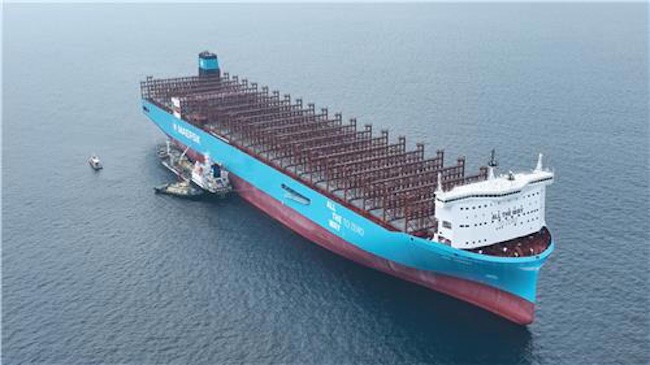
This file photo, provided by the oceans ministry on Feb. 6, 2024, shows a container carrier. (Image courtesy of Yonhap)
SEOUL, Feb. 15 (Korea Bizwire) — Container shipping costs from South Korea to Europe soared more than 70 percent last month amid escalating tensions in the Red Sea, data showed Thursday.
The average shipping cost for a 40-foot container for the route surged 72 percent on-month to come to 4.35 million won (US$3,262.5) in January, according to the data from the Korea Customs Service.
It marked the sharpest increase since the data became available in 2019.
Tensions remain high along the crucial Middle East route as Iranian-backed Houthi rebels based in Yemen are launching strikes on ships in the Red Sea, and the United States and British militaries have taken action against them.
Carriers, accordingly, have been forced to suspend transit through the maritime route, which has led to longer shipping times and the increase in shipping costs.
Other routes also reported rising shipping costs in January, which was also attributable to the growth in export volumes.
Costs for shipping from South Korea to the U.S. west coast went up 3.5 percent on-month to 4.34 million won, and those to the U.S. east coast increased 6 percent to 4.87 million won.
The shipping expense to Japan also climbed 13.5 percent to 704,000 won, and that to China inched up 2.4 percent to 704,000 won, the data showed.
The figures include freight rates, commissions and other charges reported by local exporters.
But South Korean importers’ average cost to ship a 40-foot container from major nations fell last month.
The shipping expense from the EU and the U.S. west coast dropped 31.1 percent and 13 percent, respectively, and that from the U.S. east coast and China also shed about 3 percent each, the data showed.
(Yonhap)






